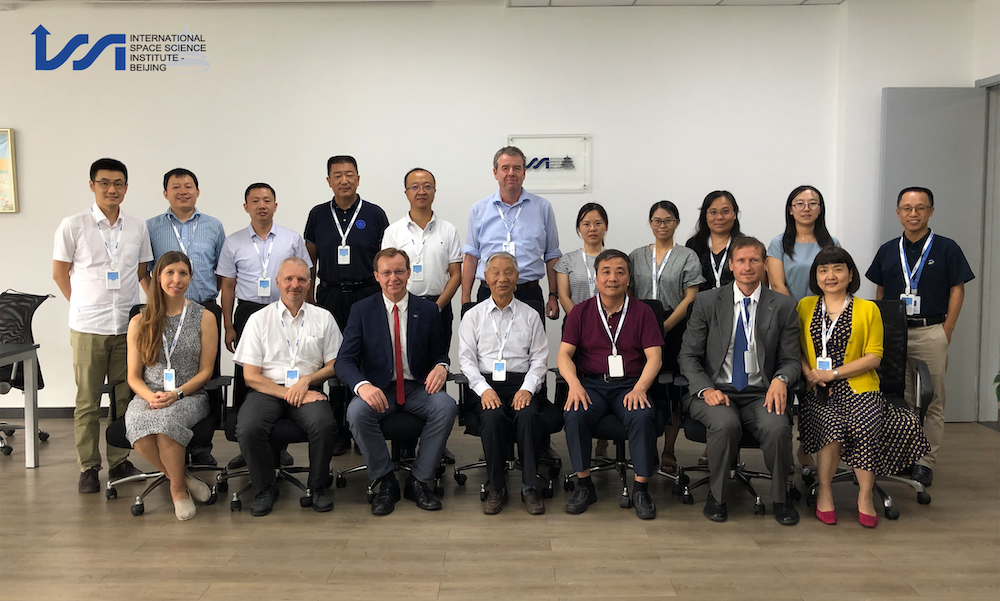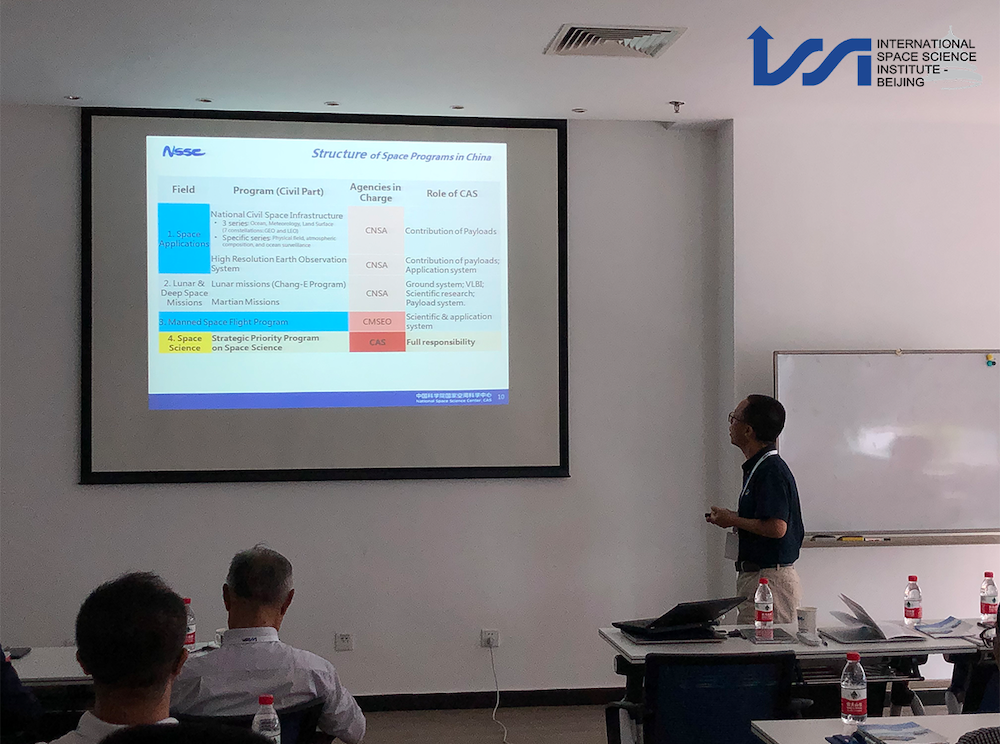BEIJING, CHINA — The forum on “Exploring greenhouse gases, water and climate changes by LEO-LEO occultation”, organized by the International Space Science Institute-Beijing (ISSI-BJ), was successfully held on July 24-25, 2019 at our premises in Haidian district, Beijing.
Under the sponsorship of the Chinese Academy of Sciences (CAS) as well as the National Space Science Center (NSSC, CAS), the forum was attended by nearly 20 leading scientists from renowned institutions and convened by Gottfried Kirchengast (WEGC, University of Graz, AT), Daren Lv (IAP, CAS, CN), Yueqiang Sun (NSSC, CAS, CN), Quanlin Fan (NSSC, CAS, CN), Xin Wang (IAP, CAS, CN), Armin Loescher (ESA Future Missions & Instrument Division, NL), Stig Syndergaard (DMI Copenhagen, DK), Congliang Liu (NSSC, CAS, CN), and Maurizio Falanga (ISSI-BJ, CN).

Figure 1 - Group photo of the forum participants
As ISSI-BJ is devoted to the achievement of a deeper scientific and technological understanding of a wide range of space science disciplines, the forum aimed to investigate the role and contribution of the Essential Climate Variables (ECVs), such as the atmospheric thermodynamic state variables and greenhouse gases, to the research on atmospheric physics and global climate change.
Given the need to improve the existing ground-based and satellite observations, to successfully deliver atmosphere and climate benchmark data, and to reduce data ambiguity, the forum focused on three main subjects: the key scientific questions and responses of ECVs in relation to global change; the principles, algorithms, and payloads of microwave occultation-using centimeter and millimeter wave signals between low Earth orbit satellites (LEO-LEO microwave occultation, LMO) as well as of the LEO-LEO infrared-laser occultation (LIO); the Climate and Atmospheric Components Exploring Satellites (CACES) mission concept proposed to the Strategic Priority Research Program of Chinese Academy Science (SPRPCAS).
The forum’s schedule, spread over two days, neatly reflected the content focus, as its first day started with the introduction to the LEO-LEO occultation technique and the review of previous studies in Europe as well as in China, which were brilliantly provided by Prof. Kirchengast, Prof. Loescher, Prof. Sun, and Prof. Liu, followed by the insightful overview on the CACES mission as well as on the scientific challenges in greenhouse gases, water, and climate change studies.
As the second day started, a deeper understanding of the CACES mission concept design as well as of complementary missions and scientific international collaborations was achieved thanks to the insightful presentations given by Prof. Wickert and Prof. Cahohy, among others. It allowed conveners and participants to elaborate on a solid ground the discussion on the science goals of CACES, on data observing and gathering techniques. The discussion on the potential of international partnerships, which represented the concluding part of the forum and that preceded the evening’s gathering organized by CACES team.

Figure 2 - Quanlin Fan (NSSC, CAS, CN) introducing the National Space Science Center and China’s Space Science Missions
As the output of this forum, an issue of TAIKONG, the ISSI-BJ magazine, will be distributed to the science communities and space science institutions and will be made available on the ISSI-BJ website.
---
For more information, please contact ISSI-BJ PR and Editorial Manager Laura Baldis: laura.baldis@issibj.ac.cn